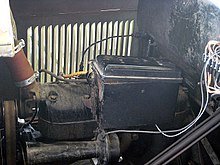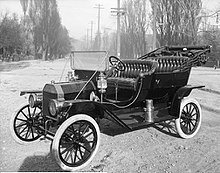Wilson
FRF Addict
Make your own Fuel
---------- Post added at 09:06 PM ---------- Previous post was at 09:01 PM ----------
 ya don't be silly. hows the indys doing they run like 98 right too bad we all can't use that much but for now e-30 imo works the best for any engine. all so imo should never have came out with e-85 until all vehicle's could use it and all can use e-30
ya don't be silly. hows the indys doing they run like 98 right too bad we all can't use that much but for now e-30 imo works the best for any engine. all so imo should never have came out with e-85 until all vehicle's could use it and all can use e-30
---------- Post added at 09:11 PM ---------- Previous post was at 09:06 PM ----------
Indy Cars Run on Ethanol
by Don Ames
Indy Cars Run on Ethanol
 The Greenest Racing On The Planet—IndyCars
The Greenest Racing On The Planet—IndyCars
by Dale Y the Green Guy
If you have ever heard of The Indy 500, then you know a little bit about IndyCars. These are the open wheel cars that race around street courses and ovals at over 200-plus miles per hour. At the Indianapolis Motor Speedway, the cars will travel at over 230 miles per hour down the straights!
Names like A.J. Foyt, Mario Andretti, Al and Bobby Unser, Rick Mears and a host of other equally famous drivers have competed in this series, and it is still going strong to this day. In fact, the Indy 500 is the most watched race in the world, bar none, and somewhere around 300,000 people actually attend the race every Memorial Day weekend.
What a lot of people don’t know is that the Indy race cars run on 100% ethanol fuel. No gas, no diesel, just pure sustainable ethanol made from plants and other vegetable matter. The engines that propel these beautiful cars put out around 650 horsepower, proving that ethanol is as good of a racing fuel as gasoline. Because they burn ethanol, the cars put out very few pollutants when they run, exactly the same as any ethanol powered vehicle would.
The best part about using ethanol is the safety factor.
Gasoline is incredibly volatile due to its lower flash point. Ethanol, on the other hand, doesn’t burn as quickly or as violently as gasoline. This lends to the safety of the sport because there is more time to react to an engine fuel fire, and more time to react when getting a driver out of a dangerous situation. The proof is in the pudding. Since ethanol has been used in these cars, there have been no serious burns recorded. Consider that during the gasoline powered days of years gone past, burning up in a car was a feared and dreaded possibility every time a race was run. No more with ethanol use.
If you like racing or not, that is your choice, and as a whole, I don’t tune in to other forms of racing. But it is hard for me to argue with a venue that promotes its green initiative by using a 100% sustainable fuel. Granted, the series is not totally green by any stretch of the imagination, but they are on the right track because no one else in the world runs ethanol as a racing fuel.
I’ll be watching the IndyCar races this year, to be sure. And with every drop of ethanol they use for fuel, it will continue to confirm the fact that this is the greenest racing on the planet.



---------- Post added at 09:06 PM ---------- Previous post was at 09:01 PM ----------
Just FYI I hope people know you can't drink e-30 or e-10 or whatever ethanol is mixed with. You can only drink 100% ethanol. I don't want some of you crazies drinking some of Wilson's mix and then half of FRF members don't come back.
Denaturants that Wilson talks about in his paragraph in short means that they poisoned it so people don't drink it.
We use 14 lbs gas which is Natural Gas you use to cook off your stove "not Propane" into liquid state and dump it in the 100% ethanol.
Just looking out for people.
Now back to Wilson's words of wisdom
 ya don't be silly. hows the indys doing they run like 98 right too bad we all can't use that much but for now e-30 imo works the best for any engine. all so imo should never have came out with e-85 until all vehicle's could use it and all can use e-30
ya don't be silly. hows the indys doing they run like 98 right too bad we all can't use that much but for now e-30 imo works the best for any engine. all so imo should never have came out with e-85 until all vehicle's could use it and all can use e-30---------- Post added at 09:11 PM ---------- Previous post was at 09:06 PM ----------
Indy Cars Run on Ethanol
by Don Ames
Indy Cars Run on Ethanol
 The Greenest Racing On The Planet—IndyCars
The Greenest Racing On The Planet—IndyCarsby Dale Y the Green Guy
If you have ever heard of The Indy 500, then you know a little bit about IndyCars. These are the open wheel cars that race around street courses and ovals at over 200-plus miles per hour. At the Indianapolis Motor Speedway, the cars will travel at over 230 miles per hour down the straights!
Names like A.J. Foyt, Mario Andretti, Al and Bobby Unser, Rick Mears and a host of other equally famous drivers have competed in this series, and it is still going strong to this day. In fact, the Indy 500 is the most watched race in the world, bar none, and somewhere around 300,000 people actually attend the race every Memorial Day weekend.
What a lot of people don’t know is that the Indy race cars run on 100% ethanol fuel. No gas, no diesel, just pure sustainable ethanol made from plants and other vegetable matter. The engines that propel these beautiful cars put out around 650 horsepower, proving that ethanol is as good of a racing fuel as gasoline. Because they burn ethanol, the cars put out very few pollutants when they run, exactly the same as any ethanol powered vehicle would.
The best part about using ethanol is the safety factor.
Gasoline is incredibly volatile due to its lower flash point. Ethanol, on the other hand, doesn’t burn as quickly or as violently as gasoline. This lends to the safety of the sport because there is more time to react to an engine fuel fire, and more time to react when getting a driver out of a dangerous situation. The proof is in the pudding. Since ethanol has been used in these cars, there have been no serious burns recorded. Consider that during the gasoline powered days of years gone past, burning up in a car was a feared and dreaded possibility every time a race was run. No more with ethanol use.
If you like racing or not, that is your choice, and as a whole, I don’t tune in to other forms of racing. But it is hard for me to argue with a venue that promotes its green initiative by using a 100% sustainable fuel. Granted, the series is not totally green by any stretch of the imagination, but they are on the right track because no one else in the world runs ethanol as a racing fuel.
I’ll be watching the IndyCar races this year, to be sure. And with every drop of ethanol they use for fuel, it will continue to confirm the fact that this is the greenest racing on the planet.





